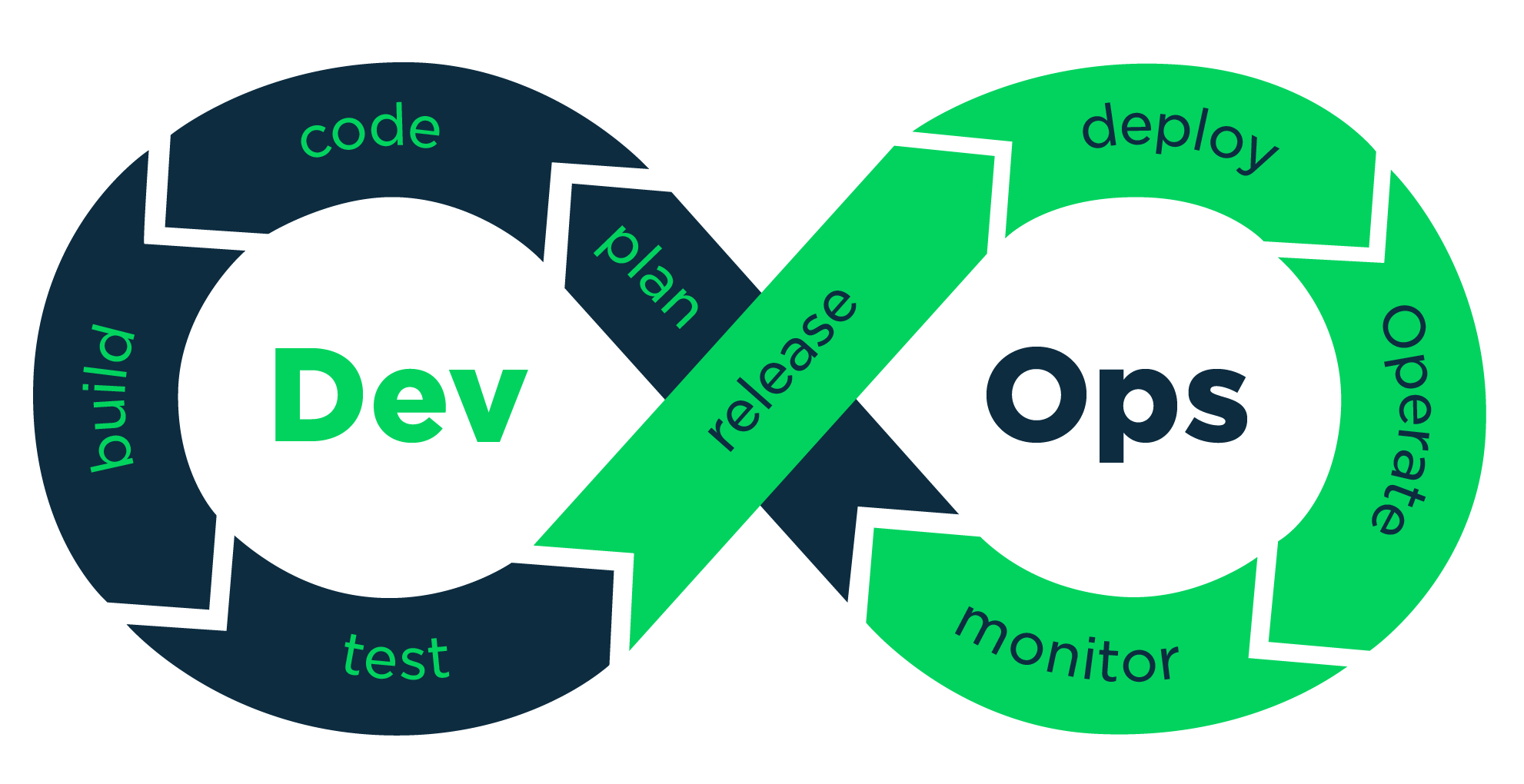Today on our first day we are discussing the below topics
What is DevOps?
What are Automation, Scaling, and Infrastructure?
Why DevOps is Important? , etc.
So let's get started -
What is DevOps?
DevOps is a set of practices, tools, and a cultural philosophy that automates and integrates the processes between software development and IT teams.
A DevOps team includes developers (Dev) and IT operations (Ops) working collaboratively throughout the product lifecycle, to increase the speed and quality of software deployment. DevOps increases an organization’s ability to deliver applications and services at high velocity: evolving and improving products at a faster pace than organizations using traditional software development and infrastructure management processes. This speed enables organizations to better serve their customers and compete more effectively in the market.
Fig. The DevOps Lifecycle -

What is Automation?
Automation is a term for technology applications and processes where human input is minimized. Automation can be used in various industries. Automation is about digitizing work by using tools to streamline and centralize routine tasks, automation manages business processes for uniformity and transparency. Automation is where machines can mimic human tasks and repeat the actions once humans define the machine rules. The use of a repeated set of processes can increase IT productivity and efficiency and reduce human errors.
What is Scaling?
The ability of a system or product to continue to function well when it is changed in size or volume in order to meet a user's need. Typically, the rescaling is to a larger size or volume. The rescaling can be of the product itself or in the scalable object's movement to a new context. It is possible to scale the application easily when you are expecting traffic and it is also easier to downgrade if you have a lot of resources that are not getting used currently.
What is Infrastructure?
Infrastructure as code is a practice in which infrastructure is provisioned and managed using code and software development techniques, such as version control and continuous integration. The cloud’s API-driven model enables developers and system administrators to interact with infrastructure programmatically, and at scale, instead of needing to manually set up and configure resources. Thus, engineers can interface with infrastructure using code-based tools and treat infrastructure like how they treat application code. Because they are defined by code, infrastructure and servers can quickly be deployed using standardized patterns, updated with the latest patches and versions, or duplicated in repeatable ways.
Why DevOps is important?
Speed - Move at a high velocity so you can innovate for customers faster, adapt to changing markets better, and grow more efficiently at driving business results. The DevOps model enables your developers and operations teams to achieve these results.
Rapid Delivery - Increase the frequency and pace of releases so you can innovate and improve your product faster. The quicker you can release new features and fix bugs, the faster you can respond to your customers’ needs and build a competitive advantage. Continuous integration and continuous delivery are practices that automate the software release process, from build to deploy.
Reliability - Ensure the quality of application updates and infrastructure changes so you can reliably deliver at a more rapid pace while maintaining a positive experience for end users. Use practices like continuous integration and continuous delivery to test that each change is functional and safe. Monitoring and logging practices help you stay informed of performance in real time.
Scale - Operate and manage your infrastructure and development processes at scale. Automation and consistency help you manage complex or changing systems efficiently and with reduced risk. For example, infrastructure as code helps you manage your development, testing, and production environments in a repeatable and more efficient manner.
Improved Collaboration - Build more effective teams under a DevOps cultural model, which emphasizes values such as ownership and accountability. Developers and operations teams collaborate closely, share many responsibilities, and combine their workflows. This reduces inefficiencies and saves time.
Security - Move quickly while retaining control and preserving compliance. You can adopt a DevOps model without sacrificing security by using automated compliance policies, fine-grained controls, and configuration management techniques.
What are the common technologies used in DevOps?
Version control systems (e.g. Git) for managing and tracking code changes
Continuous integration tools (e.g. Jenkins, Travis CI) for automating the build and testing of code
Containerization technologies (e.g. Docker) for packaging and deploying applications
Configuration management tools (e.g. Ansible, Puppet) for automating the configuration and management of infrastructure
Monitoring tools (e.g. Nagios, New Relic) for tracking the performance and availability of systems
Cloud platforms (e.g. AWS, Azure, GCP) for providing infrastructure and services for deployment
Thank you for reading! Hope you find this article helpful.
Signing Off - Wasim
